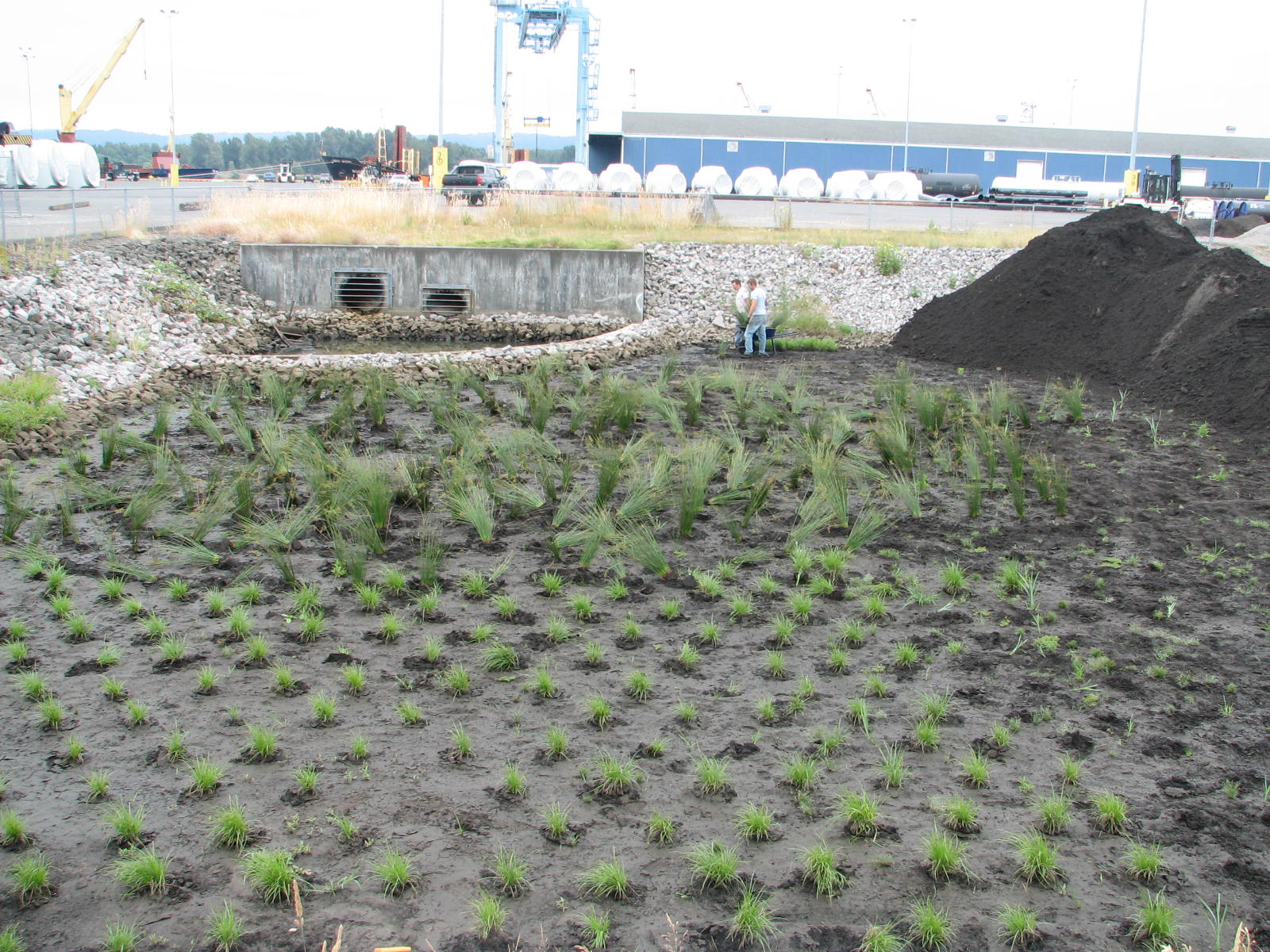Largest Stormwater Bio-filtration Facility in World calls Port of Vancouver Home
 In 2009, the Port of Vancouver USA funded the construction of the largest stormwater bio-retention facility in the world. The port’s Terminal 2 Stormwater Bio-Filtration Facility treats stormwater runoff from 50 acres at one of the port’s five marine terminals, handling 18 cubic feet per second, making it the first of its kind. After treatment, water is released into the Columbia River.
In 2009, the Port of Vancouver USA funded the construction of the largest stormwater bio-retention facility in the world. The port’s Terminal 2 Stormwater Bio-Filtration Facility treats stormwater runoff from 50 acres at one of the port’s five marine terminals, handling 18 cubic feet per second, making it the first of its kind. After treatment, water is released into the Columbia River.
The entire structure is approximately 23,650 square feet and construction took 62 days to complete. The port hired contractors McKay and Sposito, Inc. of Vancouver, Washington to design the bio-retention facility based on Washington State and local city stormwater standards.
Stormwater runoff from the terminal first enters the bio-retention facility through two inlet pipes for preliminary metals removal through ion adsorption and filtration. An inlet bay with an oil boom then collects runoff and provides preliminary sediment removal and oil reduction.
The system design allows for ponding of the treatment flows as deep as one foot in the facility, and three catch basins installed along the outlet end provide internal bypass drainage for depths exceeding one foot. Under-drain piping was also installed, which discharges treated runoff through the existing outfall to the Columbia River.
Effluent water quality data collected in 2010-2012 has shown vastly improved removal of total and dissolved copper, zinc, and turbidity.
The port’s Terminal 2 bio-filtration facility represents one of the first treatment facilities implementing this low impact development technology to treat runoff from a large industrial facility. The early success of the system to treat metals in stormwater runoff has piqued the interest of Ecology and may be the model for other bio-retention facilities being designed for other northwest industrial properties.
